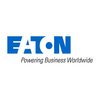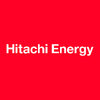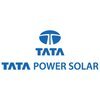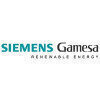
Siemens Energy
Proud winner of ABECA 2025 - AmbitionBox Employee Choice Awards
Filter interviews by
Siemens Energy Interview Questions and Answers
51 Interview questions
Python is an interpreted, high-level language, while C++ is a compiled, low-level language with manual memory management.
Python is dynamically typed; C++ is statically typed. Example: In Python, you can write 'x = 5' without declaring type.
Python uses automatic memory management (garbage collection); C++ requires manual memory management using 'new' and 'delete'.
Python has a simpler syntax, making it easier for be...
AOP complements MOP by providing enhanced flexibility and efficiency in packaging design for Line of Sight (LOS) applications.
AOP (Advanced Optical Packaging) allows for better light management compared to MOP (Mechanical Optical Packaging).
AOP can reduce the overall size and weight of packaging, which is crucial in applications like mobile devices.
AOP enables more complex geometries and designs that can improve p...
API and ASME codes ensure safety, reliability, and efficiency in centrifugal compressors and their auxiliary systems.
API (American Petroleum Institute) codes focus on the design and operation of equipment in the petroleum industry.
ASME (American Society of Mechanical Engineers) codes provide standards for pressure vessels and piping systems.
API 617 specifies requirements for centrifugal compressors used in the oil...
Corona loss refers to the loss of energy due to corona discharge in electrical systems, affecting efficiency and performance.
Occurs in high-voltage transmission lines where ionization of air leads to energy loss.
Can result in audible noise and radio interference.
Example: A power line operating at 400 kV may experience corona loss, reducing efficiency.
Mitigation techniques include using larger conductors or corona ...
Temperature increase in a particular stage can be due to various reasons such as increased workload, equipment malfunction, or environmental factors.
Increased workload leading to higher heat generation
Equipment malfunction causing overheating
Environmental factors like poor ventilation or high ambient temperature
Chemical reactions or processes generating heat
The core component of BESS is the battery energy storage system.
Battery energy storage system (BESS) is a technology that stores energy through the use of batteries.
It typically consists of batteries, a battery management system, and an inverter.
BESS can be used for various applications such as peak shaving, load shifting, and renewable integration.
Example: Tesla Powerwall is a popular BESS used for residential en...
UPS is used to provide backup power in case of electrical outages or fluctuations.
Provides continuous power supply during outages
Protects sensitive electronic equipment from damage due to power surges or fluctuations
Allows for safe shutdown of devices to prevent data loss
Commonly used in data centers, hospitals, and critical infrastructure
Types include offline, line-interactive, and online UPS
A substation is a facility used to transform voltage levels and distribute electricity to consumers.
Substations receive high voltage electricity from power plants or transmission lines
They transform the voltage to a lower level for distribution to homes and businesses
Substations may also include equipment for switching, controlling, and protecting the power flow
Examples of substations include step-down substations...
A relay is an electrically operated switch that uses an electromagnet to mechanically control the switching of a circuit.
Relays are used to control high power circuits with low power signals.
They consist of a coil, armature, and contacts.
Common types include electromagnetic relays, solid-state relays, and reed relays.
Examples of relay applications include automotive starter solenoids and industrial control systems...
Stress is the force applied to a material, while strain is the resulting deformation or change in shape.
Stress is the force applied per unit area on a material, measured in units like Pascals or pounds per square inch.
Strain is the resulting deformation or change in shape of the material, typically expressed as a percentage of the original size.
Stress and strain are related by the material's modulus of elasticity,...
Siemens Energy Interview Experiences
85 interviews found
(2 Questions)
- Q1. How the EHS managements system implemented at site
- Ans.
The EHS management system is implemented at the site through a combination of policies, procedures, training, audits, and continuous improvement efforts.
Establishing EHS policies and procedures to outline expectations and requirements
Providing EHS training to employees to ensure understanding and compliance
Conducting regular audits and inspections to identify areas for improvement
Implementing corrective actions to addr...
- Q2. How the EHS policy is being implemented at site
- Ans.
The EHS policy is implemented at the site through regular training, audits, inspections, and communication with employees.
Regular training sessions conducted to educate employees on EHS policies and procedures
Audits and inspections carried out to ensure compliance with EHS regulations
Open communication channels established for employees to report any safety concerns or incidents
Safety committees formed to monitor and i...
Interview Preparation Tips
I appeared for an interview in May 2025, where I was asked the following questions.
- Q1. Django questions related to seriliazers and RestAPI
- Q2. Python and C++ difference
- Ans.
Python is an interpreted, high-level language, while C++ is a compiled, low-level language with manual memory management.
Python is dynamically typed; C++ is statically typed. Example: In Python, you can write 'x = 5' without declaring type.
Python uses automatic memory management (garbage collection); C++ requires manual memory management using 'new' and 'delete'.
Python has a simpler syntax, making it easier for beginne...
Interview Preparation Tips
I applied via Company Website and was interviewed in Dec 2024. There was 1 interview round.
(5 Questions)
- Q1. General discussion
- Q2. What is your previous work experience?
- Q3. Gdnt related questions
- Q4. Components used in compressor and types of compressor
- Ans.
Components used in compressor include motor, piston, valves, and cooling system. Types of compressors include reciprocating, rotary, and centrifugal.
Components used in compressor: motor, piston, valves, cooling system
Types of compressors: reciprocating, rotary, centrifugal
- Q5. Why do you want to join our organisation
- Ans.
I am drawn to your organization's innovative projects and collaborative work environment.
I admire the company's commitment to pushing boundaries in design and engineering
I am excited about the opportunity to work with a talented team of professionals
I believe my skills and experience align well with the organization's goals and values
(5 Questions)
- Q1. Costs control assessment
- Q2. Best teem management
- Q3. Daily MIS data analysis
- Q4. Regular maintenance implementations
- Ans.
Regular maintenance implementations are crucial for ensuring the smooth operation of equipment and preventing costly breakdowns.
Regularly schedule maintenance tasks such as equipment inspections, lubrication, and calibration.
Keep detailed records of maintenance activities and equipment performance to identify trends and potential issues.
Train maintenance staff on proper procedures and best practices to ensure efficient...
- Q5. Customer service representative
Interview Preparation Tips
I applied via Naukri.com and was interviewed in Nov 2024. There was 1 interview round.
(2 Questions)
- Q1. It's a new technology
- Q2. Siemens turbine transmitter ext..
I applied via LinkedIn and was interviewed in Aug 2024. There were 3 interview rounds.
Aptitiude all core subject mcqs
(1 Question)
- Q1. Resume based question plus apllication question of electrical core
(2 Questions)
- Q1. Strenth and weakness
- Q2. Self introduction
I appeared for an interview in Feb 2025.
(1 Question)
- Q1. Work profile details
Coding with UML diagrams
(2 Questions)
- Q1. C++ Question related to pointers
- Q2. C++ problem solving
(1 Question)
- Q1. C++ problem solving.
(1 Question)
- Q1. Managerial round with some problem solving.
(2 Questions)
- Q1. Salary discussion.
- Q2. Joining date confirmation.
I appeared for an interview in Apr 2025, where I was asked the following questions.
- Q1. Can you provide details about your background?
- Q2. What were your responsibilities in your previous company?
- Q3. How do you handle work related pressure/stress?
- Q4. Tell me about yourself.
- Q5. How much was your salary in your previous company?
- Q6. How much salary do you expect from us?
Interview Preparation Tips
(2 Questions)
- Q1. What is the core component of BESS.
- Ans.
The core component of BESS is the battery energy storage system.
Battery energy storage system (BESS) is a technology that stores energy through the use of batteries.
It typically consists of batteries, a battery management system, and an inverter.
BESS can be used for various applications such as peak shaving, load shifting, and renewable integration.
Example: Tesla Powerwall is a popular BESS used for residential energy ...
- Q2. Battery, PCS, INVERTER
(1 Question)
- Q1. What is the cmm and what about cmm for tool
- Ans.
CMM stands for Coordinate Measuring Machine, used for measuring the physical geometrical characteristics of an object. CMM for tool refers to using CMM for measuring tools.
CMM is a precision measurement device used to determine the dimensions, angles, and shapes of an object.
CMM uses a probe to touch various points on the object's surface and records the coordinates to create a 3D model.
CMM for tool is commonly used in...
Top trending discussions






Siemens Energy Interview FAQs
Some of the top questions asked at the Siemens Energy interview -
The duration of Siemens Energy interview process can vary, but typically it takes about less than 2 weeks to complete.
Tell us how to improve this page.
Siemens Energy Interviews By Designations
- Siemens Energy Design Engineer Interview Questions
- Siemens Energy Graduate Trainee Interview Questions
- Siemens Energy Senior Manager Interview Questions
- Siemens Energy Technical Support Engineer Interview Questions
- Siemens Energy Software Developer Interview Questions
- Siemens Energy System Engineer Interview Questions
- Siemens Energy Deputy Manager Interview Questions
- Siemens Energy Manager Interview Questions
- Show more
Interview Questions for Popular Designations
- Design Engineer Interview Questions
- Associate Interview Questions
- Senior Executive Interview Questions
- Software Engineer Interview Questions
- Business Analyst Interview Questions
- Graduate Engineer Trainee (Get) Interview Questions
- Associate Software Engineer Interview Questions
- Java Developer Interview Questions
- Show more
Overall Interview Experience Rating
based on 83 interview experiences
Difficulty level
Duration
Interview Questions from Similar Companies
Siemens Energy Reviews and Ratings
based on 783 reviews
Rating in categories
10-14 Yrs
Not Disclosed
8-14 Yrs
Not Disclosed
9-12 Yrs
Not Disclosed
|
Design Engineer
172
salaries
| ₹4.5 L/yr - ₹10.4 L/yr |
|
Manager
162
salaries
| ₹16 L/yr - ₹28 L/yr |
|
Senior Executive
155
salaries
| ₹9.2 L/yr - ₹16.4 L/yr |
|
Deputy Manager
92
salaries
| ₹12.4 L/yr - ₹20 L/yr |
|
Solution Engineer
79
salaries
| ₹7.7 L/yr - ₹14 L/yr |
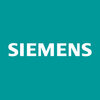
Siemens
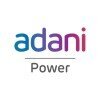
Adani Power

Adani Green Energy

ReNew
- Home >
- Interviews >
- Siemens Energy Interview Questions


